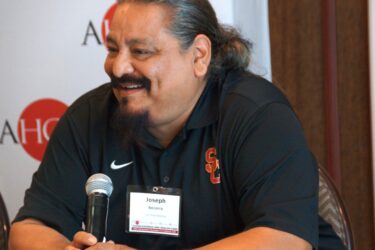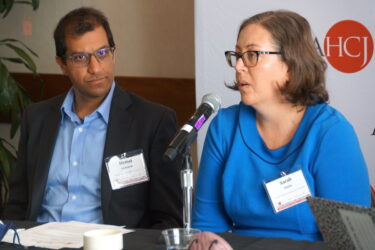
Today is National Rural Health Day, an annual opportunity for grassroots groups, nonprofits and agencies, including the Federal Office of Rural Health Policy, to highlight the unmet health needs of the estimated 62 million Americans who live and work in rural communities. And take a look at efforts to address them.
For example, there are some interesting stories to write about how workforce expansion efforts are getting help from new technology. Telehealth models are broadening access to a range of medical, mental and dental services in rural places. During a National Rural Health Day webcast scheduled for 2:30 p.m. EST today, HHS Acting Deputy Secretary Mary Wakefield will speak about how telehealth technology will be harnessed to expand health care services to Indian Health Service areas in the Great Plains.

Finding oral health services can be a particular challenge for those Americans, many studies have found. Dentists are in short supply in many rural areas, according to the U.S. Department of Health and Human Services. The nearest provider can be far away, and transportation and cost pose significant barriers for the poor, the young, the elderly and other groups. Access to optimally fluoridated water also can be limited.
A growing number of states and tribes are addressing the provider shortage through the use of technically-trained midlevel dental providers, also called dental therapists. The providers, often are compared with nurse practitioners, are trained to deliver a range of services including screenings, cleanings, preventive care, fillings and extractions.
Dental therapists provide care under the supervision of dentists, but organized dental groups have widely resisted their use. Critics insist that dentists alone have the training to perform what they consider irreversible surgical procedures, such as drilling and extracting teeth.
In spite of this resistance, variations on the midlevel model slowly have been gaining ground.
Vermont this summer cleared the way for dental therapists to go to work in the state. Earlier this year, the Swinomish Indian Tribal Community in Washington state’s Skagit County hired a dental therapist to work in its clinic. Oregon approved a pilot program allowing two tribes to hire the midlevel providers. The Massachusetts State Senate approved an amendment authorizing dental therapists.
Dental therapists in Alaska overcame a court challenge from dental groups and have been working in the state’s tribal areas for more than a decade. Minnesota and Maine have adopted variations of the dental therapist model. Last year, the agency responsible for overseeing dental education in the United States agreed to move forward with plans to establish a national accreditation process for dental therapist training programs.
Now states such as Kansas, Michigan, New Mexico and Ohio are considering legislation, pilot programs and other proposals to authorize these providers, according to the Pew Charitable Trusts, which has strongly supported the use of dental therapists.
Pew’s website offers resources reporters can use to check the status of midlevel dental provider efforts in their state. Pew also has produced reports and resources that provide perspectives on oral health disparities and the dental workforce debate.
While still opposed to dental therapists, the American Dental Association has promoted an effort to train community dental health coordinators who serve as patient navigators and oral health educators in rural and tribal areas.
It might be a good idea to find out what is happening in your state.









